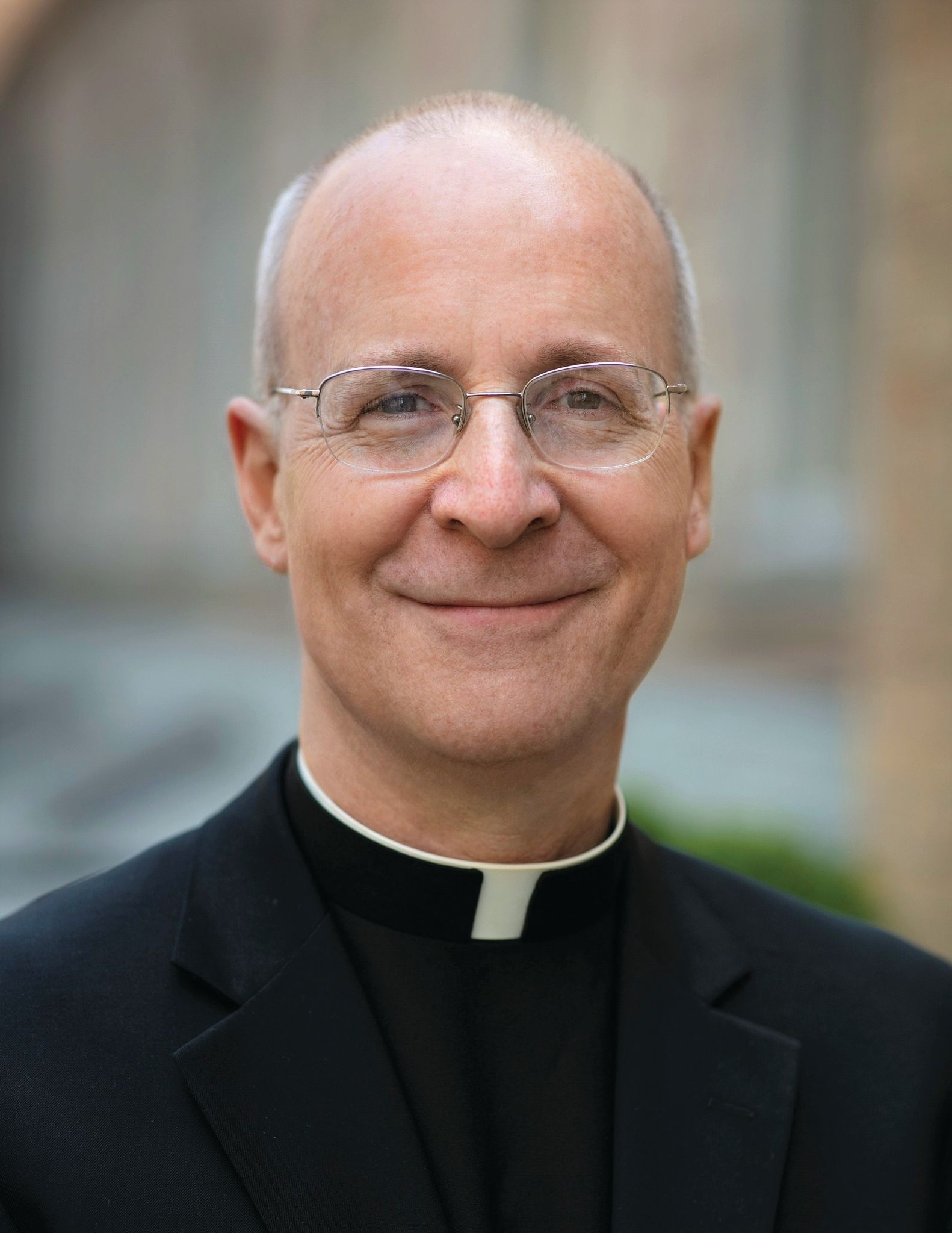I recall a fine priest who ministered when I was young in my home parish in Kenmare, Co. Kerry. In response to perennial questions about God’s role in the human condition, his usual answer was, “It is all a mystery.”
When reading the Rev. James Martin’s recent book “Come Forth: The Promise of Jesus’s Greatest Miracle,” which deals with the raising of Lazarus from the dead, I thought of the priest from my childhood.
Delving into the whys and wherefores of this amazing biblical event, Martin wonders why, despite Christ’s promise, “Ask and you shall receive—- knock, and the door shall be opened—for everyone who asks receives,” this rarely seems to work in practice.
He examines various perspectives proposed over the centuries that might throw light on this question, specifically about why the recitation of prayers does not seem to diminish human suffering. Thousands of children die from malnutrition every day, no matter how long people pray for some miraculous happening that would give them a shot at life. How do you explain away Jesus’ assurance that every sincere prayer will be answered?
Fr. Martin writes about “a mysterious God” who is not bound by the laws of logic, a somewhat evasive perspective that many will find unsatisfactory. His response reminded me of the kicking-for-touch wisdom of the Kenmare priest from long ago.

The Rev. James Martin S.J.
In his last book, “Learning to Pray,” Fr. Martin challenges readers to appreciate the multiple possibilities for prayer in their lives. This book highlights the many dimensions of a relationship with God, including the depressing dark nights described by Mother Theresa, who, because of her absorption with helping the poor, is now correctly deemed a saint.
“Come Forth” is a continuation of his book on prayer. Both stress engagement with God as an experience of friendship with the divine. Acknowledging God is understood as central to the human experience, encompassing mystery (that word again!) and sometimes disappointment as well as rare periods of ecstasy.
The first question that Fr. Martin confronts about the Bible story in St. John’s Gospel about Lazarus concerns its historicity: Did it actually happen, or was it a story concocted in the early years of the new religion to promote the belief that Christ was divine? Most Christians have no doubt that Jesus raised his friend Lazarus from the dead, and the author, a Jesuit priest, affirms this belief.
However, he brings up some powerful questions that suggest the matter is far more complex. How can we explain that this event, considered the greatest miracle in the four gospels, is only mentioned in John’s story? Skeptics point with wonderment to this extraordinary happening where a man was revived who was dead for four days and lay in the tomb for two of those. How could the other gospel writers skip that amazing tale in writing about Christ’s life?
Perhaps the most engaging answer provided in the book suggests that the three Synoptic gospels are more concerned about Christ’s Galilean ministry, while John was focused on Judea. Matthew, Mark and Luke may have thought that Jesus’s power to raise the dead was sufficiently demonstrated in Capernaum (Jairus’s daughter) and Nain (the widow’s son).
The distinguished English writer Catherine Nixey, in her just-published book “Heresy, Jesus Christ and the Other Sons of God,” provides a very different perspective on belief in miracles at the time the Gospels were written.
Her writing points to numerous healing stories, including resurrecting the dead, that were common among different cultures in the Middle East in those years, but in her view all these stories lack credibility. “By the first century AD, being revived from death was a common phenomenon,” she writes early in her book.
Nixey, who was raised a Catholic by her parents, a former nun and monk, has left the church for many years, and in this book, she proudly proclaims that she is an atheist, seemingly determined to disabuse Christians of what she considers their unfounded anti-intellectual beliefs.
Fr. Martin in his book concentrates on Lazarus and his two sisters and their interplay with Jesus; Martha is seen as the activist who focused on providing hospitality for him, while Mary, sitting near him, was the contemplative who massaged his feet with oil. Martha complained to her sister and to Jesus that she was not pulling her weight with the household chores. This criticism evoked a mild but memorable riposte from their friend that Mary had chosen the better part.
Surprisingly, none of the three got married at a time when Jewish culture stressed the importance of having children. The author wonders if this was due to some family disease or disability.
Martha declares that her friend, Jesus, is the “Messiah and the Son of the living God,” a major biblical proclamation that Fr. Martin analyzes in detail. He teases out various interpretations of the word Messiah, quoting the distinguished scholar Raymond Brown as explaining that it meant “the expected king of the house of David.”
He continues with a learned disquisition about the messianic title, which is central to understanding the New Testament. This is followed by Martha’s second affirmation, that he is the Son of God. Catherine Nixey writes that this was a common title widely used in the early years of the common era. Fr. Martin explains clearly its Christian significance claiming its equivalence with the term Messiah.
Jim Martin is honored by progressive Catholics for a strong public stand in favor of full church rights for the LGBTQ (lesbian, gay, bisexual, transgender and queer) community — which is the subject of his book “Building a Bridge.” He ran into fierce opposition among Catholics for his outspoken support of what was – and still is — an unpopular stance. He was vilified because many practicing Catholics, following the pulpit teaching in their churches, disapprove of intimate relationships outside the binary male-female paradigm.
He met with Pope Francis, a fellow Jesuit, who seemed to approve of his diligent work while still publicly subscribing to a very narrow definition of gender and sexuality. It would be interesting to read Fr. Martin’s reflections on these contradictions.
Meantime, “Come Forth,” the most recent from the prolific and best-selling author, is an engaging and well-researched study of Jesus’s relationship with Lazarus and his sisters Mary and Martha.
Each chapter ends with thoughtful questions for discussion. Clearly, Fr. Martin wants to encourage his audience to grapple with the profound issues raised in the book.
Gerry O’Shea blogs at wemustbetalking.com and is a regular contributor to the Irish Echo.







